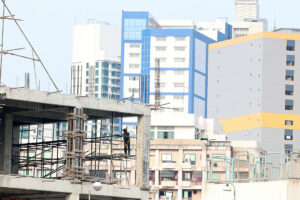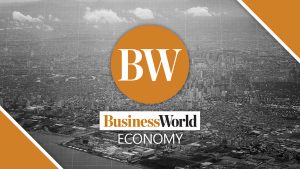BSP likely to resume tightening as upside risks materialize

THE IMPLEMENTATION of higher minimum wages and jeepney fares this month may further stoke inflation, giving the Bangko Sentral ng Pilipinas (BSP) more reason to resume monetary tightening next month, GlobalSource Partners said.
GlobalSource country analyst Diwa C. Guinigundo said on Monday that the P1 provisional increase in jeepney fares, which took effect nationwide on Sunday, “could have further inflationary consequences, not the least of which is the possible upset of inflation expectations.”
“In addition, what could further lead to elevated inflation print is the wage order that mandates a P40 increase in the daily minimum wage of workers in private establishments in Central Luzon, a major contributor to both output and inflation dynamics,” Mr. Guinigundo said in an Oct. 9 brief.
Regional wage boards also approved a P30 increase in the daily minimum wage in Cagayan Valley and P35 for the Soccsksargen (South Cotabato, Cotabato, Sultan Kudarat, Sarangani, and General Santos City) regions. All wage orders will take effect on Oct. 16.
A P40 increase in the daily minimum wage in the National Capital Region (NCR) took effect on July 16.
“All these will bolster our initial view that while the BSP could choose to keep its hawkish stance by maintaining its policy rate at 6.25% against its latest (inflation) forecasts of 5.8% and 3.5% for 2023 and 2024, respectively, these are mounting motivations for an ultimate resumption of monetary tightening,” Mr. Guinigundo said.
The Monetary Board has kept the benchmark interest rate at 6.25% since March. It has hiked borrowing costs by 425 basis points (bps) since May 2022 in a bid to tame inflation.
However, headline inflation accelerated for a second straight month to 6.1% in September from 5.3% in August amid a spike in food and transport costs. This brought the nine-month inflation average to 6.6%.
“With all of these upside risks materializing, and the fact that the 3.5% forecast for 2024 is uncomfortably inching towards the high end of the 2-4% target, we are now inclined to see a possible resumption of monetary tightening starting next month,” Mr. Guinigundo, a former central bank deputy governor, said.
“To avoid market jitters, baby steps are likely, but sustained.”
Even before the release of September inflation data, BSP Governor Eli M. Remolona, Jr. has signaled the possibility of an off-cycle rate hike before the Monetary Board’s November meeting.
However, Mr. Guinigundo said weak economic growth could prompt the BSP to pull back on further rate hikes.
“This will be an unpopular decision. But the Philippines’ gross domestic product (GDP) continues to grow while demand pressures remain given the elevated readings of core inflation. Hence, a proactive monetary policy does not necessarily destroy business activities but could actually inspire them,” he added.
The economy grew by a weaker-than-expected 4.3% in the second quarter, its slowest growth in more than two years. Economic managers earlier said GDP would need to grow by 6.6% in the second half in order to meet the lower end of the government’s 6-7% target.
Finance Secretary Benjamin E. Diokno and National Economic and Development Authority (NEDA) Secretary Arsenio M. Balisacan earlier said that there is no more need for further monetary tightening.
Mr. Balisacan said that raising interest rates could hurt consumers and the economy, while Mr. Diokno said that the BSP has “done enough” in terms of monetary tightening.
Third-quarter GDP data will be released on Nov. 9. The Monetary Board’s next policy-setting meeting is on Nov. 16. — Luisa Maria Jacinta C. Jocson




